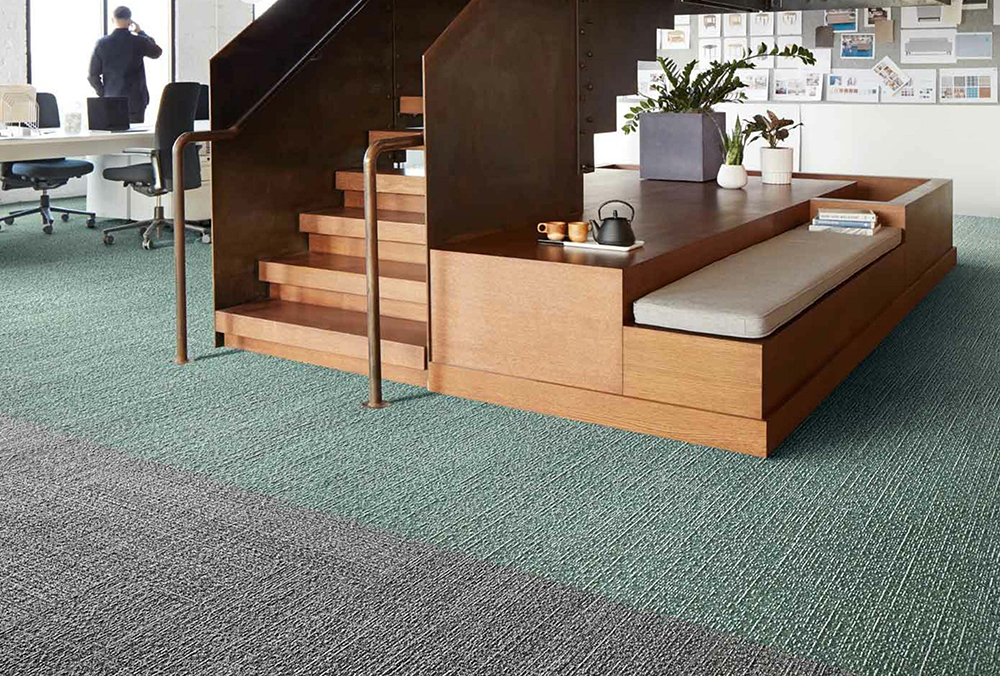tp bennett designs a fresh new spot for Aviva at EightyFen
A transparent, community-focused office design represents a milestone in the organisation's commitment to creating positive workspaces.
Inspired by Japanese aesthetics, the new Embodied Beauty™ collection helps to reduce the carbon footprint of your space.
3 min read

United Kingdom
There is no mistaking that the urgency around the climate crisis is increasing. Building and construction is responsible for 39% of all global carbon emissions, so we all have a crucial role to play.
Following movements like Architects’ Declare and Architects Climate Action Network, the launch of Interior Design Declare in March 2021 was another positive step in creating collective action. Carbon is a key area of focus for these groups, and it is also at the heart of many sustainability targets set by end users around the globe. This spotlight on carbon gives us an opportunity to start to look at ways of moving away from just doing less harm, to actually benefitting the planet.
‘When it comes to creating better commercial spaces, Interface works closely with our customers to address the carbon footprint of their designs,’ says Becky Gordon, Interface’s Regional Sustainability Manager UKIME. ‘Rather than carbon being the enemy, we see it as a resource, and by learning to work with carbon, we can use it as a building block to engineer better products.’
‘Nature manages and processes carbon in a way that provides balance to the planet,’ explains Becky. ‘Human activity has put this cycle out of balance, so it is essential that we work to not only reduce carbon emissions, but find creative ways to remove carbon from the atmosphere. At Interface, we are committed to becoming a carbon negative enterprise by 2040. This means not stopping at carbon neutral products, but creating products which work to remove carbon from the atmosphere.’
A key milestone in the Interface journey is their latest innovation – the company’s first ever carbon negative carpet tiles which are part of a new collection, Embodied Beauty™. All seven styles of Embodied Beauty™ are carbon neutral across their full product life cycle but, importantly, this is the first Interface carpet tile collection to feature three new cradle-to-gate carbon negative carpet tiles. These products feature their new CQuest™BioX backing, which stores more carbon than ever before. Put simply, there is less carbon in the atmosphere after manufacturing these tiles than before they were made.



We understand that creating climate conscious spaces is more important to designers and those in the built environment than ever before,’ says Becky. ‘But we also know that spaces which are more sustainable shouldn’t come at the expense of function, performance, or style.’
Embodied Beauty™ carries the tagline: ‘Inspired by nature; designed to respect it’ – which perfectly sums up the design approach. Reflecting Japanese aesthetics of minimalism, restoration, and the organic beauty of the natural world, the collection has been designed to reflect the concept of working in alignment with nature. This results in a range of textural and colour options, all of which are designed to work together to create an array of unique designs, ranging from narrow monochromatic patterns, to large-scale graphic tufted textures. Designed by Interface Vice President of Global Product Design, Kari Pei, Embodied Beauty™ embraces the principles of ikigai, a Japanese concept related to ‘having a purpose’, helping to create effortlessly beautiful spaces which importantly put people and nature at the centre of the design.
‘The Embodied Beauty™ collection represents a new milestone for our industry,’ Becky adds. ‘This innovative way of manufacturing proves that we can use carbon as a building block to engineer better products and help our customers who want to create beautiful, more sustainable spaces.’



Inspiration for your next read
A customisable new flooring collection blends artistry with cutting-edge design and innovation.
Following their debut at CDW 2024, Interface presents two new modular carpet tile collections inspired by the organic forms of nature.
Designed to stand the test of time in commercial environments, Amtico expands its Form luxury vinyl tile (LVT) collection with new naturalistic woods and stones.